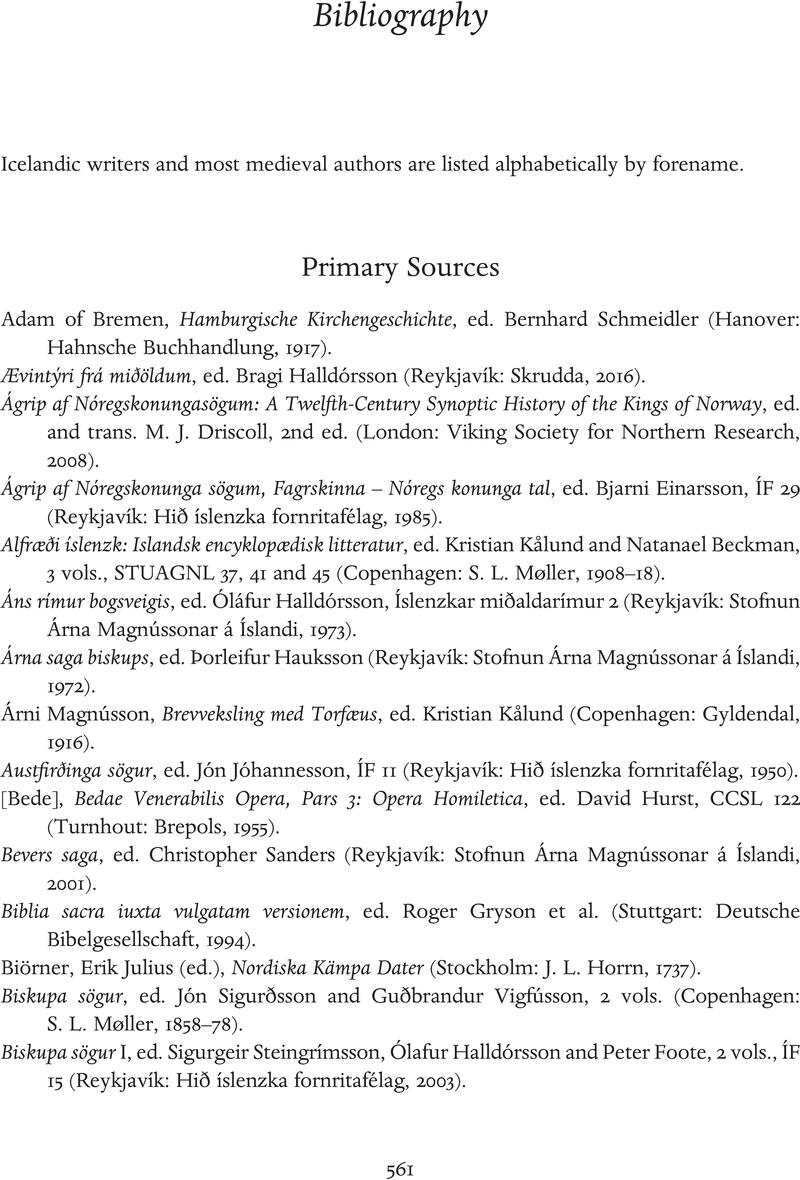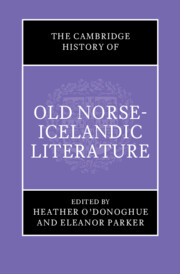Book contents
- The Cambridge History of Old Norse-Icelandic Literature
- The Cambridge History of Old Norse-Icelandic Literature
- Copyright page
- Contents
- Contributors
- Abbreviations
- Introduction
- Part I Contexts
- Part II The Distant Past
- Part III The Saga Age
- Part IV The New Christian World
- PART V Beyond Iceland
- Part VI Compilations
- Glossary
- Bibliography
- Index
- References
Bibliography
Published online by Cambridge University Press: 08 February 2024
- The Cambridge History of Old Norse-Icelandic Literature
- The Cambridge History of Old Norse-Icelandic Literature
- Copyright page
- Contents
- Contributors
- Abbreviations
- Introduction
- Part I Contexts
- Part II The Distant Past
- Part III The Saga Age
- Part IV The New Christian World
- PART V Beyond Iceland
- Part VI Compilations
- Glossary
- Bibliography
- Index
- References
Summary

- Type
- Chapter
- Information
- The Cambridge History of Old Norse-Icelandic Literature , pp. 561 - 612Publisher: Cambridge University PressPrint publication year: 2024



